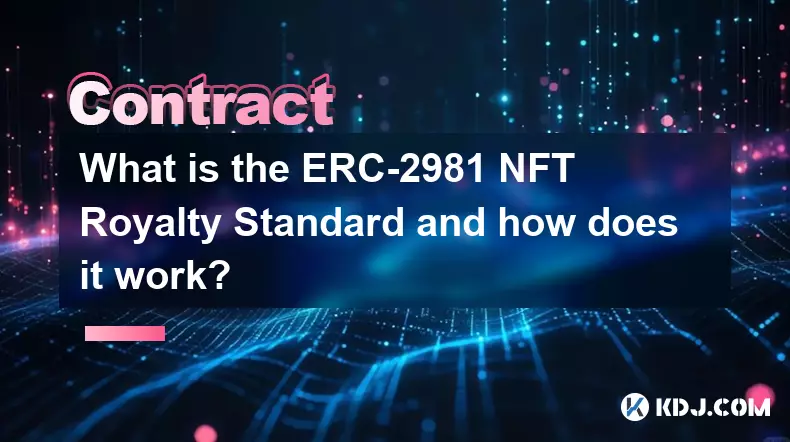-
 bitcoin
bitcoin $99296.318777 USD
-2.82% -
 ethereum
ethereum $3203.465899 USD
-6.84% -
 tether
tether $0.999590 USD
-0.03% -
 xrp
xrp $2.308913 USD
-4.00% -
 bnb
bnb $922.788929 USD
-3.53% -
 solana
solana $144.020807 USD
-5.89% -
 usd-coin
usd-coin $0.999798 USD
0.00% -
 tron
tron $0.291590 USD
-1.12% -
 dogecoin
dogecoin $0.163780 USD
-4.46% -
 cardano
cardano $0.526919 USD
-4.40% -
 hyperliquid
hyperliquid $37.888865 USD
-2.24% -
 bitcoin-cash
bitcoin-cash $510.515457 USD
-1.08% -
 chainlink
chainlink $14.436987 USD
-5.63% -
 stellar
stellar $0.267345 USD
-4.77% -
 unus-sed-leo
unus-sed-leo $9.175222 USD
0.53%
What is Solidity and why is it the primary language for smart contracts?
Solidity is a high-level, statically-typed language designed for writing secure, self-executing smart contracts on Ethereum and EVM-compatible blockchains.
Nov 13, 2025 at 12:20 pm

What is Solidity?
1. Solidity is a statically-typed, high-level programming language specifically designed for writing smart contracts on blockchain platforms, primarily Ethereum. It draws syntactic inspiration from JavaScript, C++, and Python, making it accessible to developers familiar with these languages.
2. The language was introduced in 2014 by the Ethereum team, led by Gavin Wood, with the goal of enabling developers to create self-executing contracts with predefined rules that run exactly as programmed without downtime, fraud, or third-party interference.
3. Solidity operates within the Ethereum Virtual Machine (EVM), which executes the bytecode generated from compiled Solidity code. This ensures compatibility across all Ethereum nodes and allows decentralized applications (dApps) to function uniformly across the network.
4. One of its defining features is support for inheritance, libraries, and complex user-defined types, allowing modular and reusable contract design. These capabilities are crucial for building scalable and secure decentralized systems.
5. Contracts written in Solidity can manage digital assets, enforce business logic, and interact with other contracts—making them foundational tools in DeFi, NFTs, DAOs, and token ecosystems.
Why is Solidity Dominant in Smart Contract Development?
1. Solidity benefits from being the first widely adopted language for Ethereum, giving it a strong ecosystem advantage. Its early integration with core Ethereum tools like Remix, Truffle, Hardhat, and MetaMask has solidified its position as the default choice.
2. A vast repository of open-source code, including the OpenZeppelin library, provides audited and battle-tested contract templates for common functionalities such as ERC-20 and ERC-721 tokens, access control, and secure arithmetic operations.
3. Developer documentation, tutorials, and community forums are extensive, lowering the entry barrier for newcomers. Platforms like Ethereum.org and Consensys offer comprehensive guides focused on Solidity best practices and security patterns.
4. The language is continuously evolving through Ethereum Improvement Proposals (EIPs) and community feedback, ensuring alignment with emerging standards and security requirements. Regular updates introduce new syntax features, gas optimizations, and improved error handling mechanisms.
5. Most major auditing firms and security researchers specialize in Solidity, making it easier to conduct formal verification, static analysis, and penetration testing before deployment.
How Does Solidity Ensure Security and Reliability?
1. Solidity includes built-in mechanisms such as modifiers, events, and revert statements that help developers implement defensive programming techniques. These constructs allow precise control over function execution and state changes.
2. Developers can define custom error messages using the revert and require functions, improving transparency when transactions fail due to invalid inputs or violated conditions.
3. The ability to emit events enables off-chain monitoring of contract activity, supporting front-end integration and audit trails without consuming excessive gas.
4. Strict type checking reduces runtime errors, while inline assembly allows low-level optimizations for performance-critical sections—though this requires caution to avoid vulnerabilities.
5. Compiler versions are tightly coupled with language features, preventing unintended behavior across different deployments. Using version pragmas ensures consistent compilation results across development environments.
Frequently Asked Questions
What tools are commonly used to develop with Solidity?Popular tools include Remix IDE for browser-based coding, Hardhat and Truffle for local testing and deployment, Foundry for fast testing with Solidity scripts, and Slither or MythX for automated security analysis.
Can Solidity be used on blockchains other than Ethereum?Yes, Solidity is compatible with any EVM-compatible blockchain such as Binance Smart Chain, Polygon, Avalanche, Arbitrum, and Optimism. These networks support the same bytecode format, allowing contracts to be deployed with minimal modifications.
Are there alternatives to Solidity for smart contract development?Yes, alternatives include Vyper, which emphasizes simplicity and security with a Python-like syntax; Rust, used in Solana and Polkadot ecosystems; and Cadence for the Flow blockchain. However, none have achieved the same level of adoption as Solidity in the Ethereum space.
How do developers test Solidity smart contracts before deployment?Developers write unit tests using frameworks like Hardhat or Foundry, simulating transactions and verifying expected outcomes. They also perform integration tests with mock contracts, check gas usage, and often undergo third-party audits to identify logical flaws or reentrancy risks.
Disclaimer:info@kdj.com
The information provided is not trading advice. kdj.com does not assume any responsibility for any investments made based on the information provided in this article. Cryptocurrencies are highly volatile and it is highly recommended that you invest with caution after thorough research!
If you believe that the content used on this website infringes your copyright, please contact us immediately (info@kdj.com) and we will delete it promptly.
- Mohammed Siraj's First Spell Woes: An India Teammate's Critique
- 2025-11-14 14:40:02
- BTC, ETH, and Altcoin Picks: Navigating the Crypto Landscape
- 2025-11-14 14:50:01
- Coin Toss Tales: Temba Bavuma's Wager and India vs. SA Showdown
- 2025-11-14 12:50:01
- Shubman Gill, WTC Final, and the Coin Toss: A New Yorker's Take
- 2025-11-14 15:05:01
- Aerodrome Takes Flight: Unifying Ethereum DeFi Liquidity Across Chains
- 2025-11-14 15:10:02
- Canary XRP ETF and Solana ETF: First-Day Activity Heats Up the Crypto ETF Race
- 2025-11-14 12:20:01
Related knowledge

What is a Denial of Service (DoS) attack in a smart contract and what are its common forms?
Nov 10,2025 at 05:20am
Understanding Denial of Service in Smart Contracts1. A Denial of Service (DoS) attack in the context of smart contracts refers to a scenario where a m...

What is a cryptographic nonce used for in transaction signing?
Nov 11,2025 at 05:59am
Understanding Cryptographic Nonces in Blockchain Transactions1. A cryptographic nonce is a random or pseudo-random number used only once in the contex...

How does inheritance work in Solidity smart contracts?
Nov 11,2025 at 10:40pm
Inheritance in Solidity: Building Modular Smart Contracts1. Inheritance in Solidity allows one contract to adopt the properties and functions of anoth...

What is the difference between an Externally Owned Account (EOA) and a Contract Account?
Nov 13,2025 at 04:00am
Understanding Externally Owned Accounts (EOA)1. An Externally Owned Account is controlled directly by a private key, which means only the holder of th...

What is the ERC-2981 NFT Royalty Standard and how does it work?
Nov 13,2025 at 05:39am
Understanding the ERC-2981 NFT Royalty Standard1. The ERC-2981 standard is a proposed Ethereum Request for Comment that introduces a royalty mechanism...

What is a Minimal Proxy Contract (EIP-1167) and how does it save gas on deployment?
Nov 12,2025 at 11:39am
What is a Minimal Proxy Contract (EIP-1167)?1. A Minimal Proxy Contract, standardized under Ethereum Improvement Proposal (EIP) 1167, is a lightweight...

What is a Denial of Service (DoS) attack in a smart contract and what are its common forms?
Nov 10,2025 at 05:20am
Understanding Denial of Service in Smart Contracts1. A Denial of Service (DoS) attack in the context of smart contracts refers to a scenario where a m...

What is a cryptographic nonce used for in transaction signing?
Nov 11,2025 at 05:59am
Understanding Cryptographic Nonces in Blockchain Transactions1. A cryptographic nonce is a random or pseudo-random number used only once in the contex...

How does inheritance work in Solidity smart contracts?
Nov 11,2025 at 10:40pm
Inheritance in Solidity: Building Modular Smart Contracts1. Inheritance in Solidity allows one contract to adopt the properties and functions of anoth...

What is the difference between an Externally Owned Account (EOA) and a Contract Account?
Nov 13,2025 at 04:00am
Understanding Externally Owned Accounts (EOA)1. An Externally Owned Account is controlled directly by a private key, which means only the holder of th...

What is the ERC-2981 NFT Royalty Standard and how does it work?
Nov 13,2025 at 05:39am
Understanding the ERC-2981 NFT Royalty Standard1. The ERC-2981 standard is a proposed Ethereum Request for Comment that introduces a royalty mechanism...

What is a Minimal Proxy Contract (EIP-1167) and how does it save gas on deployment?
Nov 12,2025 at 11:39am
What is a Minimal Proxy Contract (EIP-1167)?1. A Minimal Proxy Contract, standardized under Ethereum Improvement Proposal (EIP) 1167, is a lightweight...
See all articles










































































